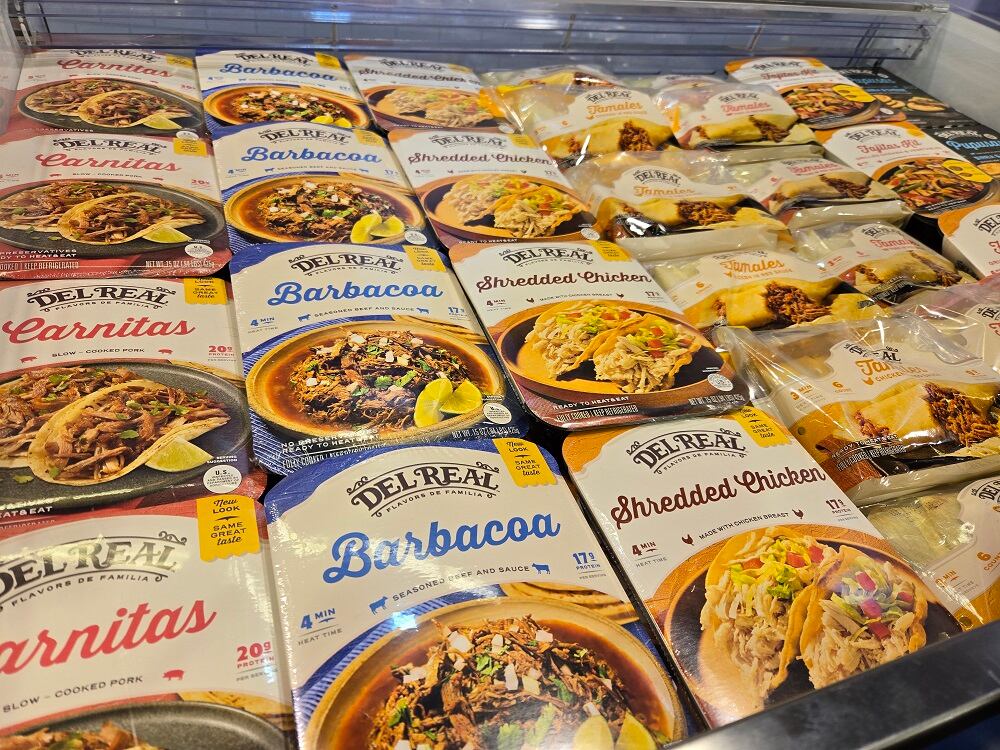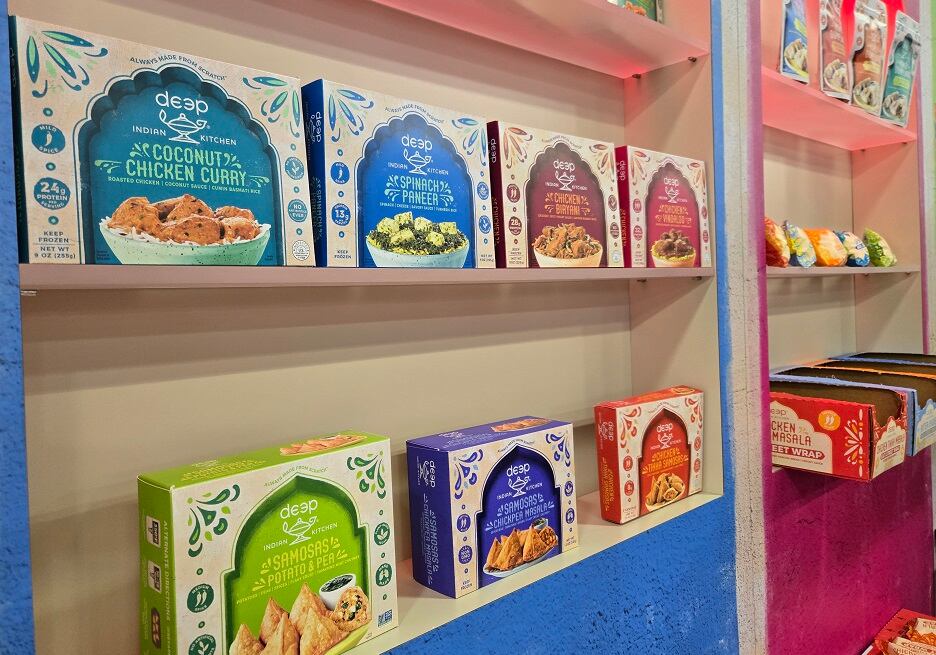Authenticity is a must-have for most consumers, particularly younger generations who seek memorable dining experiences and who want to learn more about different cultures and value “true” or hyper-specific flavors and ingredients over substitutions with mainstream or more familiar alternatives.
According to research from Datassential published last fall, 60% of consumers said they value authenticity in food more now than ever before. This is particularly true for younger generations, with Datassential reporting more than half of Gen Z consumers saying they actively seek restaurants that serve global cuisines compared to two in five Gen Xers or Baby Boomers.
The “conundrum” for manufacturers and marketers, however, is striking the right balance between the adventure authenticity promises and offering the familiarity necessary to drive trial given research in Science Direct found consumers are more likely to fear unfamiliar food and deem them “risky.”
In this episode of FoodNavigator-USA’s Soup-To-Nuts podcast, representatives from two emerging ethnic packaged food brands – Deep Indian Kitchen and Del Real Foods – share how they walk the line between authenticity and accessibility without tipping over into appropriation. Both brands, which showcased at Natural Products Expo West, offer marketing strategies that encourage trial and tips for innovating products that meet consumers where they are.
Explore past episodes of Soup-To-Nuts podcast
Never miss an episode of FoodNavigator-USA’s Soup-To-Nuts podcast, or our recently launched Founders' Fundamentals podcast - subscribe today.
Catch up on past episodes of Soup-To-Nuts:
- What is driving consumer interest in regenerative agriculture? – Consumer awareness and interest in regenerative agriculture is exponentially increasing - placing pressure on farmers, manufacturers and retailers to work together to boost supply
- Danone seeks to rekindle consumers’ love of plant-based milk – Sales of plant-based milk have slowed in the past year, but Silk and So Delicious maker Danone still sees significant potential by focusing on fun in addition to function
- What attracts consumers to whole grains and where is there room for innovation? – As the Whole Grain Stamp celebrates its 20th anniversary, Oldways Whole Grain Council considers where there is room for innovation and how to overcome barriers blocking product development and consumption of whole grains
- Better-for-you marketing claims raise red flags Could enforcement crackdown loom? - An advertising watchdog lists ‘better-for-you’ claims as a potential enforcement area for 2025 amid concerns that marketers may not be able to support implied health claims
‘Consumers don’t want anything that is Americanized or watered down’
According to research by Innova Market Insights, consumers increasingly want not just global flavors, but authenticity that is rooted in culture and will help connect them with others.
For Deep Indian Kitchen, which launched in 2019 and is sold in about 21,000 stores nationwide, this means offering mainstream American consumers the same authentic recipes that its parent company and three-generation Indian-American family business Deep Foods Inc. has served the Indian American community since 1977.
“The consumer doesn’t want anything that is Americanized or watered down, right? If you want Indian, you want the same thing that an Indian person would eat. Likewise Thai, likewise Korean, etc. So we never water down or change the product,” said Kiernan Laughlin, general manager at Deep Indian Kitchen.
But, he added, while the recipes are the same, the company tweaks how it names and positions products to better welcome consumers who are not new to Indian cuisine.
For example, instead of labeling a traditional stewed greens and soft cheese dish saag paneer, Deep Indian Kitchen labels it spinach paneer.
Convenience eases trial and enhances access of global cuisine
One of the biggest challenges for consumers seeking authentic global flavors is if they did not grow up with a specific cuisine, they likely do not know how to make it themselves, which is where Laughlin says frozen convenience comes into play.
Deep Indian Kitchen’s dishes, snacks and sides are sold in the freezer aisle, which allow consumers to try traditional dishes at a fraction of the price as in a restaurant and in a fraction of time as cooking it from scratch.
“Frozen plays a really interesting role in making the food more accessible, and I think it appeals particularly to millennials at their life stage right now where they are busy,” and balancing work and life, Laughlin said.
Even if consumers grew up with a global cuisine and know how to prepare traditional dishes, they may not have time, which is why Del Real Foods offers authentic refrigerated Hispanic Foods that can be easily mixed and matched to create versatile dishes at home.

Rachel Garner, a category manager at Del Real Foods, explains that the company’s convenient products offer an easy solution to first- and second-generation families seeking authentic Hispanic solutions and lower the barrier for trial for consumers who are not familiar with the cuisine.
“A lot of consumers have nostalgia around what their grandma used to make, what their mom used to make and these beautiful smells that you would come home to, but in a modern world today you don’t have the time to make it,” she said.
To help on-the-go shoppers maintain a connection with their culture, Del Real Foods offers staples, like tamales, fresh salsa, shredded chicken and other components that can be used as the base for a “quick scratch” meal at home. It also offers heat and eat products, like pupusas, when time is even more of the essence.
Specific, specialized ingredients boost authenticity
As consumers become more familiar with global cuisines, companies are able to draw in shoppers with increased specificity about ingredients that adds to authenticity.
By pairing regionally specific and unfamiliar sounding ingredients with more familiar dishes or products, Garner said brands can help shoppers take baby steps toward more authentic flavors and food.
“Chilies and cheeses have been the most recent way for us to play with authentic Mexican ingredients,” she said.
For example, instead of calling out generic “peppers” on pack, the company specifies the variety, such as poblano. Likewise, it blends traditional Oaxacan cheese with cheddar in its three-cheese quesadilla so that consumers can try a regional ingredient that may be unfamiliar but also be reassured by a type of cheese they already know.
Driving discovery
No matter how delicious or convenient products are, consumers won’t buy them if they don’t know about them, which is where Laughlin says packaging and branding play an essential role of not only helping products standout on shelf but introducing consumers to a cuisine with which they may not be familiar in a way that is representative and respectful of the culture from which it comes.
Deep Indian Kitchen does this with vibrant colors on its packaging that appeal to Millennials but also recall the streets of India which Laughlin notes is a “very colorful place.” Likewise, the lamp and arches on its package represent two cultural touchpoints found throughout India and so are at once authentic and welcoming.
Just as important as eye-catching packaging is strategic distribution and merchandising. Deep Indian Kitchen has about 45% share of frozen Indian food nationwide, so it is less concerned about gaining share and more focused on partnering with retailers to “grow the pie.”
To do this, the company works closely with retailers to strategically stock products in a way that they are easy to find by customers looking for them but also discoverable by those who may not know about it. For example, its new dumplings will be placed in a set with other global dumplings rather than an Indian food set.
Innovation expands access
According to Laughlin, product innovation also plays a key role in maintaining consumer engagement by introducing solutions for different day parts or usage occasions as well as improving merchandising. Deep Indian Kitchen is delivering this with the recent launch of its dumplings and street wraps.
“Last year we launched our first handheld product, our frozen Kati Street Wraps, and those are doing really well. They are sold in about 8,000 stores now. And we are launching here our Momo Dumplings, which are authentic Indian dumplings and the first of their kind to have chicken tikka masala on the inside and butter chicken on the inside. So, a really unique flavor experience,” he said.
He added “dumplings are on fire right now,” and are the fastest growing appetizer. By launching the Momo Dumpling, Deep Indian Kitchen can expand the dumpling set, rather than simply take market share from existing products.


